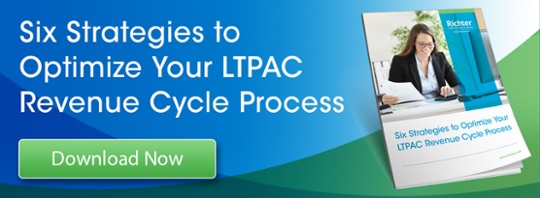- Solutions
- Accounting
- Additional Documentation Requests (ADRs) Management & Support
- Clinical Consulting
- EHR Implementation & Optimization
- Medicaid Eligibility
- Outsourced Contract Controller Services
- Outsourced Revenue Cycle Management
- PointClickCare® Consulting
- QAPI Consulting
- Resident Trust Fund Management & Advisory Services
- Revenue Cycle and Reimbursement Consulting
- Who We Serve
- Resources
- Careers
- About Us
- Contact

 Ask any revenue cycle professional in the long-term post-acute care (LTPAC) realm how the coronavirus (COVID-19) pandemic has impacted their organization’s revenue, and you’ll likely get exasperated looks, and very similar answers. The pandemic – unprecedented in our time – has caused financial and operational disruptions – and particularly cash flow problems – that have put many operators in dire straits.
Ask any revenue cycle professional in the long-term post-acute care (LTPAC) realm how the coronavirus (COVID-19) pandemic has impacted their organization’s revenue, and you’ll likely get exasperated looks, and very similar answers. The pandemic – unprecedented in our time – has caused financial and operational disruptions – and particularly cash flow problems – that have put many operators in dire straits.
